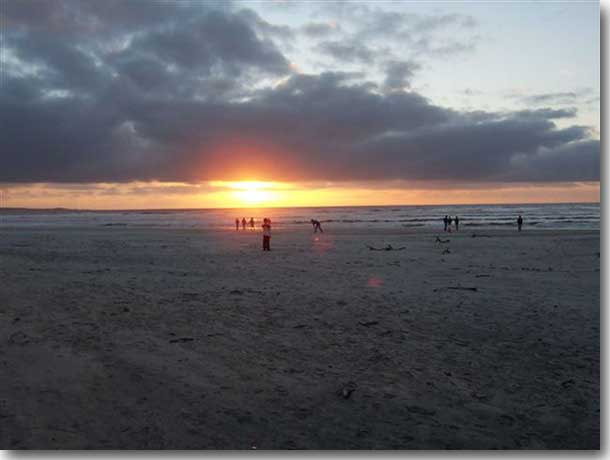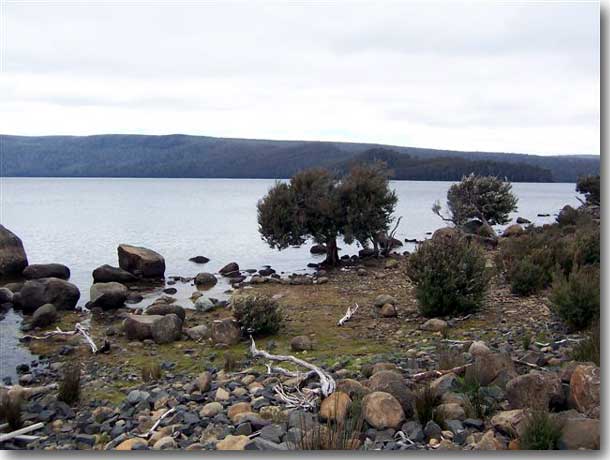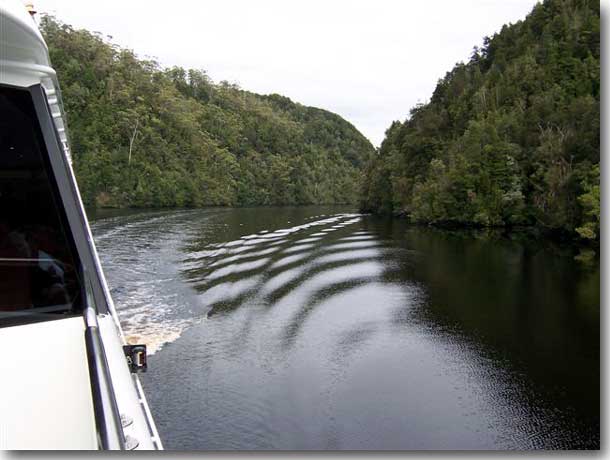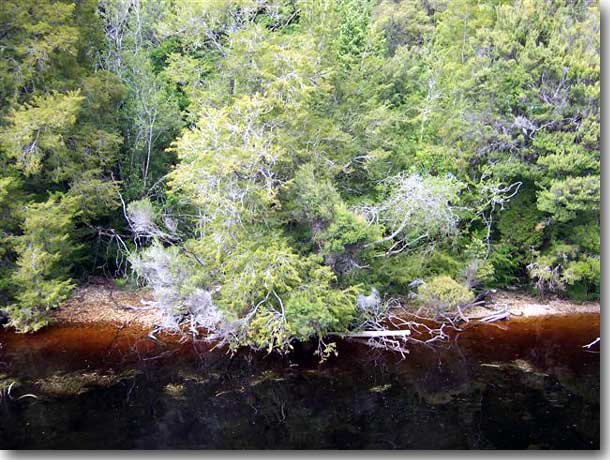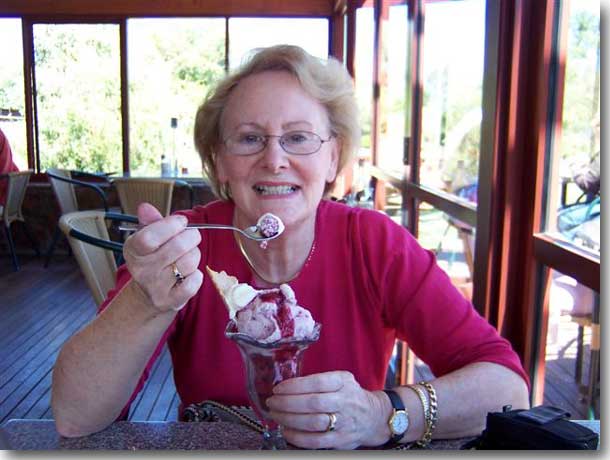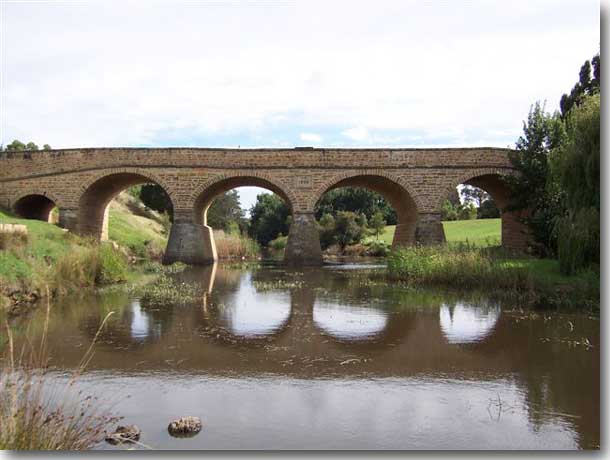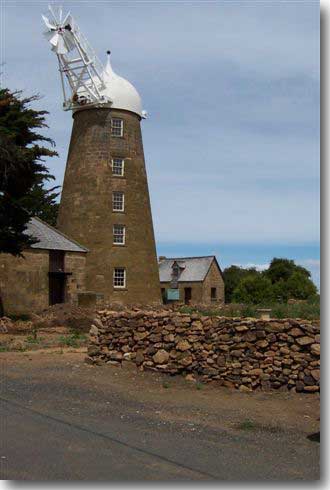|
Passport to the World over 64 years. Pages from my Travel Diary
Tasmanian visit 2/7th. February 2004.
Having gained a very cheap air fare of A$39 each way from Melbourne to Hobart with Virgin Blue we set off on Monday the 2nd. of February and arrived in Hobart at 9.30 AM, grabbed a hire car, and settled in at an apartment in Salamanca Place. Early the next morning we navigated with some difficulty out of Hobart to take the road to the West Coast via Queenstown on to Strahan, some 300 kilometers. Queenstown is a scar on the area, as mining operations have made the countryside look like a lunar landscape, some A$90 million a year being added to the Tasmanian economy from mining operations in this area, gold, copper, zinc, tin, and silver being extracted from the earth but at an apparent great cost to the surrounding environment. We drove down a steep incline, thinking we might be on a bereft Mars, to enter Queenstown, our hire car almost on its last gulp of petrol. As one of the locals filled up the tank, I commented on the fact that from Lake St Clair where it noted Queenstown was 81 kilometers to go, there had not been a single solitary mile post, or any note about far it was to reach Queenstown, his only comment "What would you want to know that information for?" Petrol was dear compared to mainland Australia, I realise it has to be transported across Bass Strait, none being available in Tasmania, the cost 103 cents a litre, "Its just come down said our local, was 106 cents, you are lucky!"
Sunset at Ocean Beach Strahan We had some 40 odd kilometers to drive into Strahan, sitting on Macquarie Harbour on the wild west coast, booked into accommodation revelling in the name of Emily's Cottage awaiting us, just what to expect we did not know, all done through the wonders of the internet. Emily's Cottage, an absolute delight, started its life in Zeehan, some 45 kilometers away, built back in 1903, and owned and occupied by a Miss Emily Reynolds, who lived there until she was 93. Many young people found there way to her house to hear about her long and interesting life, it is said she enjoyed both cigarettes and a glass of whiskey. After her death, the house lay empty and neglected for some years, to be bought by a couple from Strahan, it was cut in two pieces, transported by trucks to Strahan, to be reerected, and then restored with loving care. The cottage now resplendent, set up with lovely timber floors, a fire place with a pot belly stove to cope with the winter cold, and a fine spa bath in the bathroom. It was a pleasure to stay here, and we enjoyed our two days immensely. Lady Jane Franklin 11 Catamaran.
The lighthouse at Hell's Gate, the only entrance, 70 meters wide, to the huge, Within the harbour sits the small Sarah Island, the site of the first Penal Settlement here from 1822 to 1833. In that time about 2,000 convicts, mainly male, but some females were involved, lived and worked here. From 1824, a thriving ship building trade was instituted, and vessels up to 250 tons were completed, The last vessel the Frederick, seized by about 10 convicts sailed off to make the 10,000 miles to Chile, a remarkable achievement. The ship building on Sarah Island used the local Huon Pine, this timber with its unusual oil content makes it impervious to the usual marine growth that attacks ship's timbers, and was much prized for use in ship construction.
The shore of Sarah Island which sits in isolation within Macquarie Harbour
The ruins of the convict accommodation block on Sarah Island Fish Farming.
The Gordon River, a pristine wilderness area preserved for now and future generations The Gordon River Wilderness.
The Gordon River rain forest, the tannin, which leaches from the under growth into the river in evidence Off to the north coast and down to Evandale. We by passed Devonport, and then called into a local cheese factory, tried some samples and bought some cheese, then at Elizabeth, pulled into a raspberry farm and yielded to temptation in the shape of a luscious Raspberry ice cream sundae, half the glass stuffed with the most wonderful tasting raspberries, topped with cream, more
Denise attacks a Raspberry ice cream sundae at the Raspberry Farm Elizabeth On to the small village of Evandale, famous for its annual Penny Farthing Bicycle Race, due to be held on the 23rd. of this month, here we are staying in one of three cottages, Isabella, at the Stables, all very pleasant, but not a phone in sight in the Cottage, so I will be unable to use my Notebook to collect any E-Mails.
The 1823 stone bridge at Richmond built by convicts Friday the 6th. of February.
The old Convict built bridge at Ross Saturday the 7th. of February. All in all, a welcome and interesting break, much learned about our early settlement in Tasmania, and a great visit to the wilderness area on the West Coast, a green and quite wonderful environment, safe for posterity as a Heritage site. A number of photographs taken with our new digital camera during our Tassie stay are included here.
Callington Mill in Old Mill Lane at Oatlands, built in 1836 by John Vincent, |

